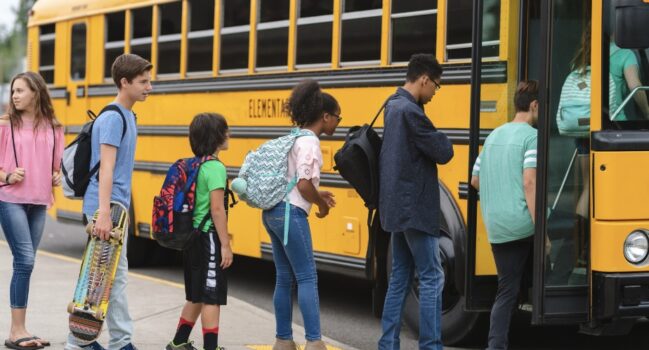
For many of us, the first weeks of school are filled with tension. For me, the close of the summer months always meant calming the butterflies that signaled the beginning of a new school year. However, the fears that many multilingual learners [MLs] experience differ greatly from what I experienced and that many students and their teachers face.
I asked ML students and educators to ask the MLs they serve: What would have helped you when you first enrolled in school? Multilingual learners across the country share key ideas about what would have helped them acclimate to their new learning environment.
What’s the Most Difficult Time for MLs?
Most MLs shared the most difficult times during the first few weeks of school. The bus rides to and from school, lunchtime, and after school. Several MLs felt that by the time their bus arrived at school, they had shut down emotionally and could not focus on learning. Lunch and after-school time amplified and affirmed the same feelings. While the language barrier was frustrating, feeling isolated was a more complex emotional challenge.
The same students shared some recommendations for supporting MLs to feel less isolated and more socially engaged from the first day of school. They suggest that we include the following strategies.
Provide a Buddy
It’s helpful to have an entry plan that includes a buddy.
One way to do this is to create a buddy plan by gathering responses to questions such as: Which classmates ride on the same bus as the new MLs? Which have the same lunch schedule? Which might join the new student in the cafeteria?
Responses to these questions help us to pair students with a peer who is a multilingual learner, former ML, or American monolingual English speaker. Buddy activities offer a sense of safety and belonging—something everyone wants as we enter a new and unfamiliar situation.
Find Common Interests
Along with pairing students with a buddy, multilingual learners offer an additional strategy for shaping and reshaping the first weeks of school and empowering everyone as valuable resources.
They suggest we ask students to share what they like to do after and outside of school. With the help of a translator, MLs can share their thoughts and learn from their peers. They can also find common interests that help us all to build community.
Offer Service-learning Activities
Also, they recommend service-learning activities to welcome new MLs. Everyone benefits when these are co-designed and co-implemented with multilingual learners, former multilingual learners, and, as importantly, American English-fluent peers. They can be the most beneficial when they occur during times when students report feeling the most isolated. Service-learning activities can include (to name a few) tutoring in content areas and extra-curricular activities (such as learning to play pickleball, an emerging sport in many American communities).
We have a much better chance of supporting multilingual learners to be successful in school when we engage in these strategies right from the start. MLs tell us that these can make the transition process less anxiety-provoking because they support students during the most challenging transitions: bus rides to and from school, lunchtime, and after school. It’s helpful to use these strategies as we prepare for a new school year.
Buy 2, Get 1 Free! Corwin Press is having a #FlashSale on August 6 and August 7, 2024. If you buy and like any of these books, please consider writing a review on Amazon to spread the word. Thank you!
Thank you!


